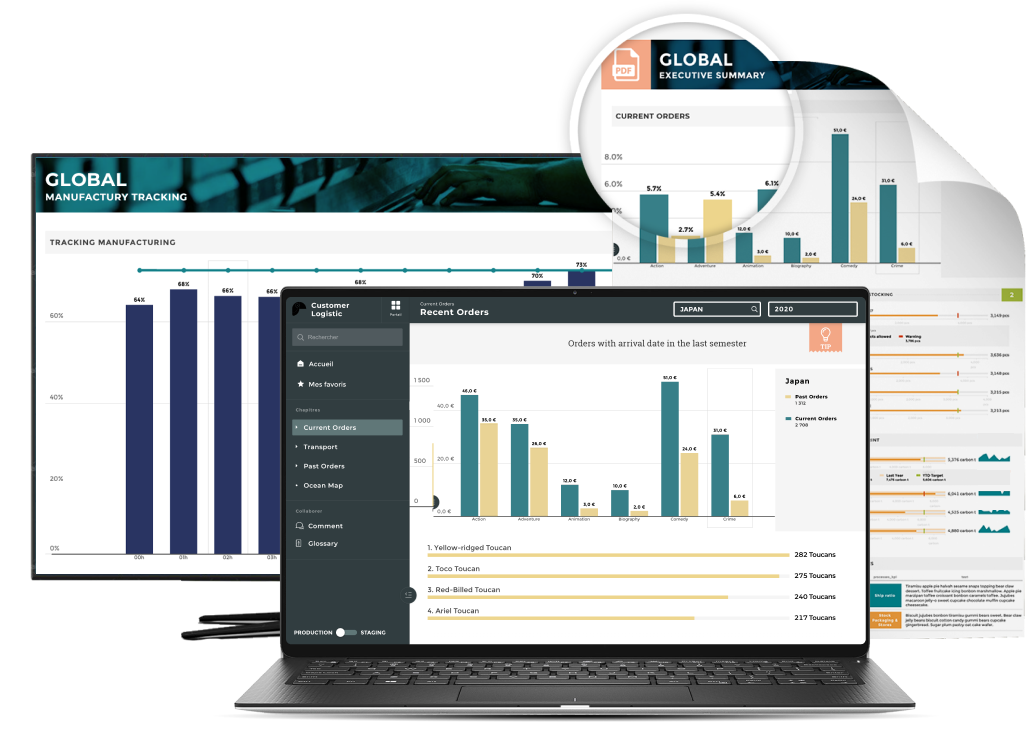
Marginal profit refers to the profit earned by a company for each additional unit (product or service) that they sell. In this case, “marginal” refers to the added cost, or profit earned, with producing the next unit. Marginal revenue, on a similar note, generally refers to the additional revenue that’s earned, while marginal cost is the additional cost associated with producing that additional unit.
Marginal profit is calculated by taking the marginal revenue (the amount of revenue earned from the sale of one additional unit) and subtracting marginal cost (the cost of producing that additional unit).
Marginal Profit = Marginal Revenue - Marginal Cost
Marginal profit is one of the most important Financial Management KPIs (Key Performance Indicators) used by businesses today, as it helps them make strategic, data-driven decisions around production levels. Marginal profit analysis is particularly useful in enabling companies to decide whether to expand production or slow down and halt it entirely.
Investopedia does a good job highlighting how mainstream economic theory shows that companies will maximize overall profits when their marginal cost is equal to their marginal revenue, or when their marginal profit is exactly zero (but more on that later).
In the SaaS context, where businesses generally operate on subscription selling models, marginal profit is just one part of a solid foundation for financial analytics.
Making sense of marginal profit
Because there are so many different terms that involve the word “profit”, it's important to understand and differentiate between them to avoid poor decision making. You may have heard, for instance, terms like “average profit”, or gross profit and net profit. These are not the same.
Marginal profit looks specifically at the money that can be made on producing one additional unit; marginal profit accounts for the scale of production. This is important because, as businesses grow in size, their cost structure changes and profitability can either increase or decrease as production ramps up.
Because there are so many different types of profit, we thought it might be helpful to (quickly) look at some definitions and formulas:
- Marginal profit: the amount earned through the production and sale of an additional unit of production. The formula for calculating marginal profit is:
Marginal Profit = Marginal Revenue - Marginal Cost
- Gross profit: the amount earned after subtracting costs from total revenue. Subtracting your cost of goods sold from total sales will yield gross profit. The formula for calculating gross profit is:
Gross profit = Total revenue – Cost of Goods Sold
- Net profit: the amount earned after accounting for or subtracting all the operating, interest, and tax expenses over a given accounting period. The formula for calculating net profit is:
Net profit = Gross profit – Expenses
- Average profit: the average amount earned per unit of production. The formula for calculating average profit is:
Average Profit = (Total Revenue – Total Cost) / Total Quantity
- Total profit: the total amount earned from selling everything that is produced. The formula for calculating total profit is:
Total Profit = Total Revenue – Total Cost
As you can see, there’s a lot of nuance when it comes to analyzing profit, each of which will generally yield different figures which are useful in their own ways.
Now that we've got that covered, let's look a bit more deeply at calculations for marginal profit.
Calculating marginal profit
In the following formula, marginal cost refers to the cost associated with producing one additional unit, and marginal revenue to the revenue earned for that additional unit.
Marginal Profit = Marginal Revenue - Marginal Cost
Again, marginal profit is looking specifically at the money that can be made on producing one additional unit and accounts for the scale of production.
Let's take a look at a specific example, using a SaaS business model, to explore how calculating different types of profit produces highly varied results.
First, it's important to clarify that the variables that impact marginal cost in the formula indicated above include things like labor, maintenance fees, debt interest, and taxes. Marginal cost is not influenced by fixed costs. Why? Because one-time expenses don’t impact the profitability of producing an additional unit.
SaaS businesses can accrue a lot of expenses before ever signing their first customer, so the marginal profit for their first customer(s) is often negative. This isn't necessarily something to worry about: since the marginal costs of running a SaaS business are quite low (think maintenance and hosting fees) in relation to research and development, the marginal profit of subsequent customers will change drastically. Gross profit, on the other hand, would likely vary quite substantially if we keep with this example.
Marginal profit and microeconomics
According to microeconomic theory, businesses that compete with one another tend to continually produce until their marginal costs are equal to their marginal revenue. That means that there is close to zero marginal profit left for whoever is producing.
What does that mean? Well, simply put, if businesses can’t compete on cost and have a negative marginal profit, they should eventually stop producing altogether. So, there is a maximal profit opportunity when a business is able to produce at a level where marginal cost is equal to marginal revenue, and marginal profit is zero.
Why should you care about marginal profit?
In addition to the important findings generated by marginal profit analysis that we mentioned above, it’s worth noting (again) that marginal profit is a calculation only of the profit that a business earns from producing one additional unit.
Marginal profit, therefore, does not reflect overall business profitability.
Businesses can use marginal profit analysis to determine if they should stop production because if one additional unit reduces overall profitability, they're left with a clear indication that they should do so.
Additionally, businesses want to maximize profits, right? So, in theory, they want to produce as many units as possible. But, as we’ve determined, their production costs are more than likely going to increase proportionally with production (but not in all cases, as we’ve also come to understand). Therefore, if analysis of marginal profit shows up negative, it's an indication that a company is overproducing.
The last word
To recap: marginal profit is the amount earned on one additional item of production, and is affected by realized marginal costs and marginal revenue.
In the SaaS context, marginal costs tend to decrease as production increases, so revenue is one of the biggest factors influencing profitability (and marginal profitability).
Marginal profit is a calculation only of the profit that a business earns from producing one additional unit and does not reflect overall business profitability.
Toucan is a customer-facing analytics platform that empowers companies to drive engagement with data storytelling. Ranked the #1 easiest to use analytics solution by Gartner Peer Insights, their no-code, cloud-based platform cuts custom development costs with a quick and easy implementation, even for non-technical builders. To find out what our users say, read their reviews on Capterra.






